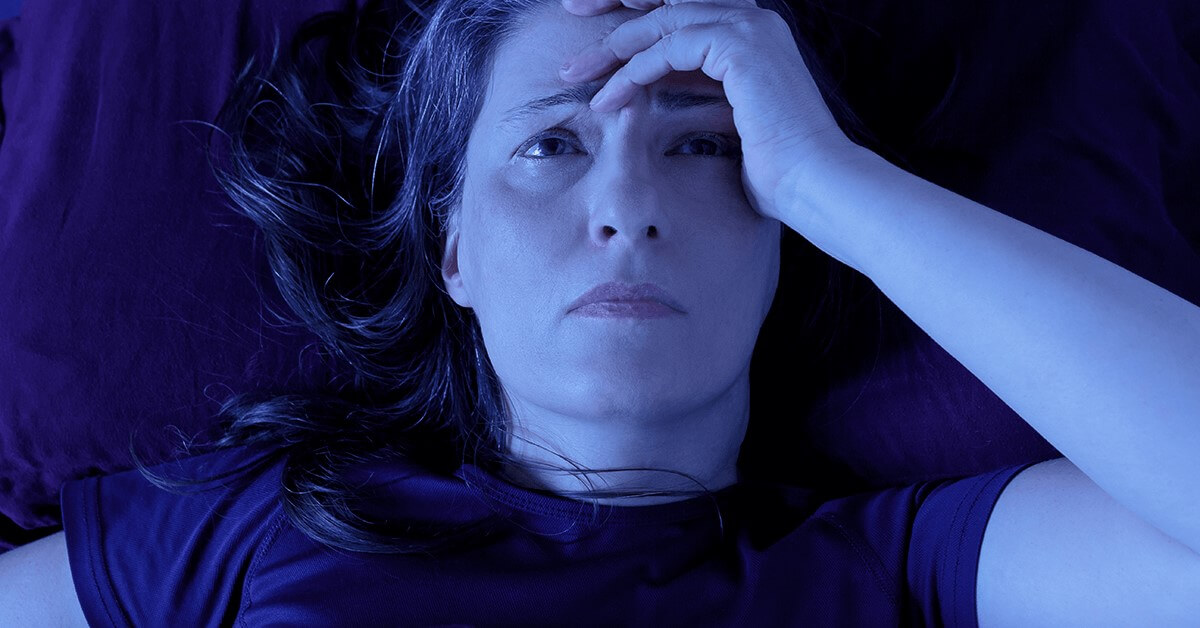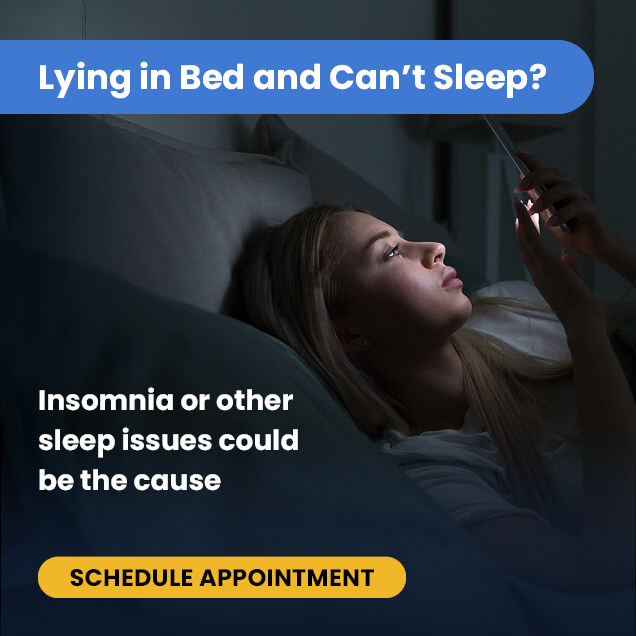Use the player to listen to the article and/or continue to read below.
What is RLS? | Types of RLS | Causes | Signs & Symptoms | Triggers | Diagnosis | Management & Treatment
Overview
The symptoms of Restless leg syndrome (RLS) can be very uncomfortable; however, treatment is available.
If you have RLS, you’ll find it difficult to sit still for an extended period. You may dread long car rides or flights due to the uncomfortable sensations that prolonged sitting triggers in your legs.
These sensations range from an unpleasant tingling to an overwhelming urge to move your legs. The discomfort goes away when you shake your legs, stand, or move around. Unfortunately, this only provides temporary relief as the discomfort returns the moment you sit down.
Most times, RLS runs in families. According to research, between 40 to 90 percent of patients have at least one first-degree relative – parent, sibling, or offspring – with the same condition.[1] RLS is more prevalent in women than in men, and the symptoms can vary from mild to severe.[2]
Although the condition is lifelong, if diagnosed, there are medications that can effectively manage the symptoms and enable you to have a better quality of life. Keep reading to find out more about this chronic disorder.
What’s RLS?
Restless Legs Syndrome, also called Willis-Ekbom disease (or RLS/WED), is a chronic sleep and neurological condition that is characterized by an uncontrollable urge to move the legs (and sometimes the arms or the whole body).
Other unpleasant sensations usually accompany the urge to move in the legs. These symptoms are more intense when you’re relaxed and especially at night, during sleep time.
RLS symptoms make it difficult for affected persons to fall asleep or have a restful sleep, leading to extreme fatigue, daytime sleepiness, sleep deprivation, and even depression.
Types of RLS
There are two types of RLS: Primary (or idiopathic) RLS as well as secondary RLS.
Primary RLS is not caused by an underlying (or secondary) condition; however, the cause of primary RLS remains unknown. Several studies suggest that there may be a genetic link, with symptoms typically appearing between the ages of 40 and 45 years.
Secondary RLS can be linked to conditions, such as iron deficiency, diabetes, pregnancy, Parkinson’s disease, multiple sclerosis, end-stage renal disease, and certain medications.[3] When RLS is from disease or medication, the disorder may disappear when the trigger is gone; however, it’s a different case for primary RLS. The symptoms typically get worse with time, though the intensity may vary and occur infrequently.
Causes
There’s a common cause of RLS in teenagers and adults that can go undiagnosed. Studies show that many adolescents and adults suffering from RLS usually have low body stores of iron.[4]
However, a 2002 study revealed that some RLS patients whose symptoms were triggered by low iron didn’t always show marked signs of anemia. This finding can be attributed to low iron levels in the brain, not the blood. To clarify, it’s brain iron deficiency that causes RLS symptoms and not low blood iron levels.
Some patients will have normal iron levels in their blood (they have no anemia), but comprehensive tests will show their RLS is related to iron deficiency. In children, there is no clear indication that reduced iron stores can cause RLS.
Signs & Symptoms
RLS mostly affects the legs, with symptoms being described as burning, tugging, itching, crawling, or gnawing feeling localized below their knees. The symptoms only occur at rest, and they stop when the person moves.[5]
The sensations can either affect both sides of the body or just one side. In some cases, during an episode, the sensations may alternate between the two sides of the body, and the severity may range from mildly uncomfortable to very painful.
Common Triggers
Knowing the things that exacerbate symptoms and avoiding them is vital for managing the problem if you have RLS.
1) Stress
Anxious feelings or feelings of being overwhelmed can trigger or aggravate their symptoms.[6] One technique proven reliable in curbing stress is deep breathing and meditation.
2) Alcohol
Alcohol exacerbates RLS symptoms. Consumption should be reduced, and if possible, avoided.[7] Exercise caution when drinking in the evening as alcohol disrupts night sleep (the period when restless legs symptoms are known to be at their peak).
Alcohol may decrease sleep onset but disrupts REM sleep, which is the most restorative sleep phase. When you wake up at night, RLS symptoms will make going back to sleep difficult.
3) Strenuous Exercise
It’s common to hear how beneficial daily exercise is for easing RLS symptoms, but there are helpful exercises and those that can exacerbate symptoms. The helpful category includes moderate exercises, while unhelpful workouts include anything vigorous that makes you start feeling pains and aches in your joints or muscles.
4) Smoking
Nicotine in cigarettes impairs blood flow to the muscles, making matters worse for people dealing with RLS. It is best to steer clear of all forms of smoking and associated products like cigarettes, e-cigarettes, and vaporizers.[8]
5) Caffeine
Unlike other triggers on this list, caffeine works differently in various people. For some people, caffeine is an obvious trigger. Surprisingly, for others, the stimulant helps in alleviating RLS symptoms.
6) Triggering Medications
- Cold and allergy drugs with antihistamines (examples are Benadryl, Dimetapp, and NyQuil)[9]
- OTC sleeping pills
- Anti-nausea drugs (such as Antivert, Dramamine, and Compazine)
- Antidepressants (like Lexapro, Effexor, and Prozac)
- Calcium Channel Blockers CCBs (used to treat hypertension, heart problems, and migraines)
- Antipsychotics (used to treat schizophrenia and bipolar disorder)
Diagnosis
There’s no specific laboratory test for RLS, so a physician’s evaluation is used for diagnosis. At the hospital, you will be asked to describe symptoms, frequency, duration, triggers, and relieving factors.
Information about current medications, along with medical and family history, may also be collected. Lab tests may rule out likely conditions (iron deficiency, pregnancy, and illness) that may be triggering RLS symptoms.[10]
Detecting Low Iron Levels in the Brain
For now, apart from a specialized brain scan, known as functional magnetic resonance imaging (fMRI), there’s no way doctors can assess brain iron levels. So what they do is check the iron level in the blood to determine if the blood iron level is low, which may reveal that the brain level might also be deficient.
Hospitals use various tests to determine the iron levels in the blood, including one that measures ferritin – the primary “house” of iron in the human cell. The ferritin level determines the type of iron treatment that would be administered to a patient.[11]
Two other important tests that are also carried out to get a more accurate diagnosis of the blood iron level are serum iron and total iron-binding capacity (TIBC) tests. Together all three tests will tell the true state of the overall iron status of the body, and whether anemia is present or not.
Management & Treatment
1) Exercise
Daily activity that includes aerobic workouts and lower-body stretches can significantly lower RLS symptoms in most people.[12] Simple exercises, like walking, often deliver the best benefits. Intense workouts similar to marathon training can backfire and cause RLS symptoms to grow worse.
2) Medications for RLS
RLS is treatable and responds well to medications. First-line treatments for the disorder are dopaminergic agents such as levodopa and dopamine agonists.
A 2011 research study reveals that dopamine agonists (pramipexole [Mirapex], rotigotine [Neupro], and ropinirole [Requip]) work better for the daily treatment of RLS due to the reduced risk of complications.[13]
The downside is that dopamine agonists can have side effects, depending on the dosage. Alternative treatments used to treat the disorder are opioids and benzodiazepine, a sedative that helps with sleep but could cause drowsiness during the day.
3) Iron Therapy
In individuals with iron deficiency or anemia, the first step of treatment is administering iron supplementation. The drug can be given intravenously (IV infusion) or orally, depending on specific factors.[14]
Oral iron is the most reliable treatment, but it can only be given when the ferritin level is low (≤ 50mcg/L). The side effects are constipation, nausea, and stomach upset.
If the blood iron level is not low, taking oral iron may not be possible because of low absorption. Also, some people cannot tolerate the gastrointestinal side effects of oral iron. So, in these two instances, an IV infusion is prescribed.[15]
Iron treatment is given for 3-4 months and then every 3 to 6 months until the iron saturation level and serum ferritin level have returned to normal. Therapy is discontinued once desired iron values are reached.
Throughout this period, the treatment is closely monitored to avoid the serious (although rare) complication of hemochromatosis or iron overload in individuals with hemochromatosis genes.
There is plenty of evidence backing the use of iron (both oral and IV) treatment in people living with RLS. The therapy is effective for mild to severe symptoms and in RLS sufferers with end-stage renal disease and those experiencing a functional iron deficiency.
Key Takeaway
RLS is generally a lifelong disorder. The symptoms may go into partial remission for days, weeks, months, or years on end and if you don’t seek treatment, they tend to worsen with time.
Fortunately, science has discovered many medications, including iron supplementation: an effective treatment that helps relieve the discomfort of RLS in adults as well as teens. With this in mind, it’s a good idea to visit your doctor to determine which of the available treatments are best for you.
Depending on your situation, you may be advised to first try some lifestyle changes or you may be placed on medication straight away. If your serum ferritin level is below 75μg/l, your doctor may likely prescribe iron therapy for you.
An extensive study released in 2018 even went as far as advising that iron treatment should be considered for all adult RLS patients except for people whose transferrin saturation (%TSTAT) >45 percent (greater than 45%). Always update your doctor on how you’re faring in order to know if the treatment is working for you.[16]
It also helps to join an RLS support group, so you’re not alone in this journey.
References:
- Facheris, M. F., Hicks, A. A., Pramstaller, P. P., & Pichler, I. 2010. Update on the management of restless legs syndrome: existing and emerging treatment options. Nature and science of sleep, 2, 199–212. https://doi.org/10.2147/NSS.S6946 [Accessed 26 October 2020].
- Stehlik, R., Arvidsson, L., & Ulfberg, J. 2009. Restless legs syndrome is common among female patients with fibromyalgia. European neurology, 61(2), 107–111. https://doi.org/10.1159/000180313.
- Oka, Y., & Ioue, Y. (2009). Brain and nerve = Shinkei kenkyu no shinpo, 61(5), 539–547 [Accessed 26 October 2020].
- Kryger, M., Otake, K., & Foerster, J. (2002). Low body stores of iron and restless legs syndrome: a correctable cause of insomnia in adolescents and teenagers. Sleep Medicine, 3(2), 127-132. doi:10.1016/s1389-9457(01)00160
- Bayard, M., Avonda, T. and Wadzinski, J., 2020. Restless Legs Syndrome. [online] Aafp.org. Available at: <https://www.aafp.org/afp/2008/0715/p235.html> [Accessed 26 December 2020].
- S Sevim, H., 2020. Correlation Of Anxiety And Depression Symptoms In Patients With Restless Legs Syndrome: A Population Based Survey. [online] PubMed Central (PMC). Available at: <https://www.ncbi.nlm.nih.gov/pmc/articles/PMC1738920/> [Accessed 12 October, 2020].
- Jiménez-Jiménez, F. J., Gómez-Tabales, J., Alonso-Navarro, H., Zurdo, M., Turpín-Fenoll, L., Millán-Pascual, J., … & García-Martín, E. (2017). Association between the rs1229984 polymorphism in the alcohol dehydrogenase 1B gene and Risk for restless legs syndrome. Sleep, 40(12), zsx174.; [Accessed 28 February 2021].
- Lavigne, G. J., Lobbezoo, F., Rompré, P. H., Nielsen, T. A., & Montplaisir, J. (1997). Cigarette smoking as a risk factor or an exacerbating factor for restless legs syndrome and sleep bruxism. Sleep, 20(4), 290-293.; [Accessed 28 February 2021].
- Ninds.nih.gov. 2020. Restless Legs Syndrome Fact Sheet | National Institute Of Neurological Disorders And Stroke. [online] Available at: https://www.ninds.nih.gov/Disorders/Patient-Caregiver-Education/Fact-Sheets/Restless-Legs-Syndrome-Fact Sheet#:~:text=certain%20medications%20that%20may%20aggravate,and%20allergy%20medications%20that%20contain> [Accessed 12 October 2020].
- Garcia-Borreguero, D., Stillman, P., Benes, H. et al. 2011. Algorithms for the diagnosis and treatment of restless legs syndrome in primary care. BMC Neurol 11, 28. https://doi.org/10.1186/1471-2377-11-28.
- Mohri, I., Kato-Nishimura, K., Kagitani-Shimono, K., Kimura-Ohba, S., Ozono, K., Tachibana, N., & Taniike, M. (2012). Evaluation of oral iron treatment in pediatric restless legs syndrome (RLS). Sleep medicine, 13(4), 429-432.; [Accessed 28 February 2021].
- Buchfuhrer, B. (2021). Restless legs syndrome: Update on evaluation and treatment. Retrieved 3 January 2021, from https://www.mdedge.com/chestphysician/article/203282/sleep-medicine/restless-legs-syndrome-update-evaluation-and-treatment/page/0/1?sso=true
- Silber, M., 2020. Uptodate. [online] Uptodate.com. Available at: https://www.uptodate.com/contents/treatment-of-restless-legs-syndrome-and-periodic-limb-movement-disorder-in-adults?search=what%20is%20restless%20leg%20syndrome&source=search_result&selected Title=1~150&usage_type=default&display_rank=1#H1663765> [Accessed 26 December 2020].
- Allen, R. P., Picchietti, D. L., Auerbach, M., Cho, Y. W., Connor, J. R., Earley, C. J., Garcia-Borreguero, D., Kotagal, S., Manconi, M., Ondo, W., Ulfberg, J., Winkelman, J. W., & International Restless Legs Syndrome Study Group (IRLSSG) (2018). Evidence-based and consensus clinical practice guidelines for the iron treatment of restless legs syndrome/Willis-Ekbom disease in adults and children: an IRLSSG task force report. Sleep medicine, 41, 27–44. https://doi.org/10.1016/j.sleep.2017.11.1126
- Publishing, H. (2021). Are you missing this simple treatment for restless legs? – Harvard Health. Retrieved 3 January 2021, from https://www.health.harvard.edu/diseases-and-conditions/are-you-missing-this-simple-treatment-for-restless-legs
- Richard P. Allen, Daniel L. Picchietti, Evidence-based and consensus clinical practice guidelines for the iron treatment of restless legs syndrome/Willis-Ekbom disease in adults and children: an IRLSSG task force report, Sleep Medicine, Volume 41, 2018, Pages 27-44, ISSN 1389-9457, https://doi.org/10.1016/j.sleep.2017.11.1126.






